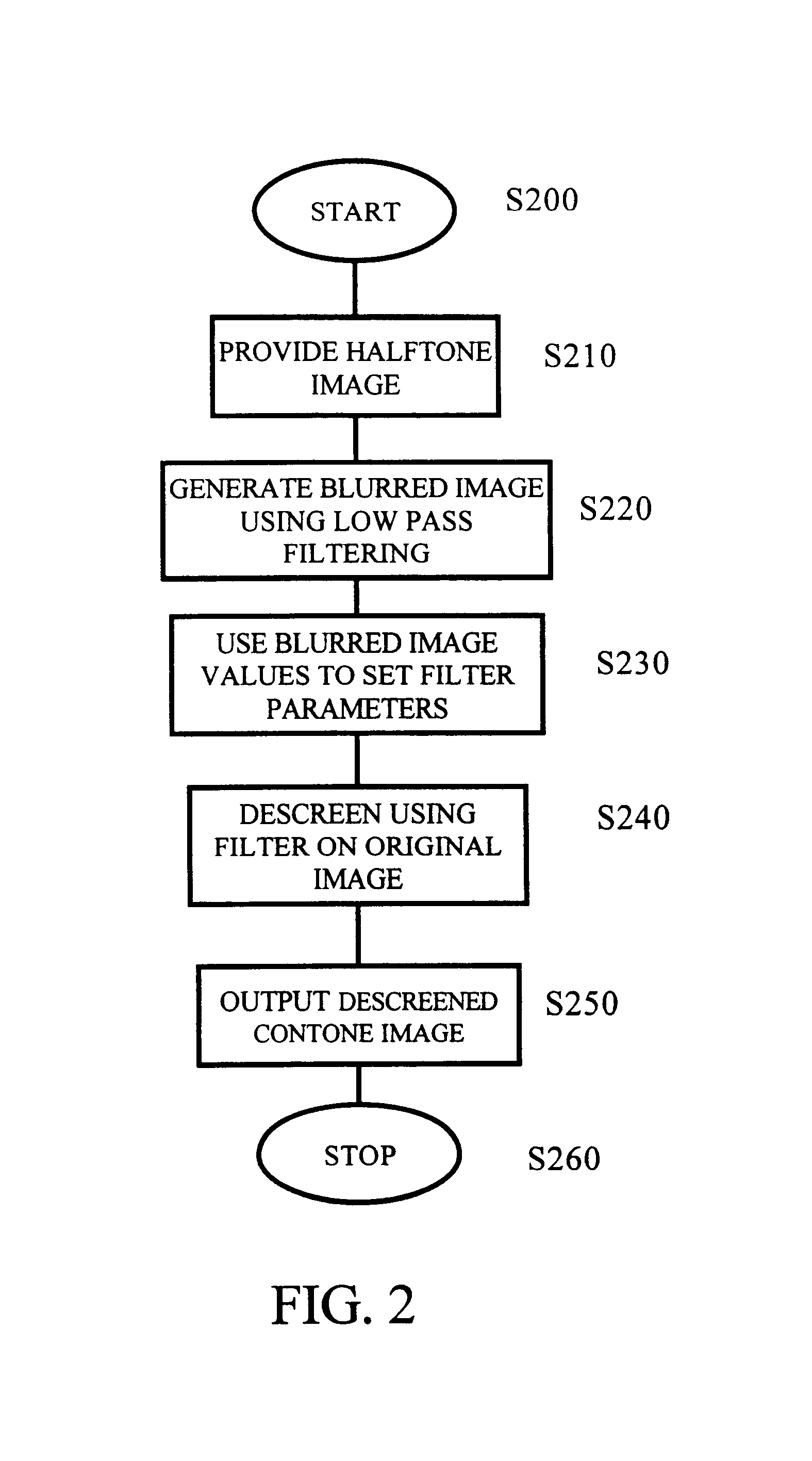High-speed, high-quality descreening system and method
- Summary
- Abstract
- Description
- Claims
- Application Information
AI Technical Summary
Benefits of technology
Problems solved by technology
Method used
Image
Examples
Embodiment Construction
An image processing system 10 shown in FIG. 1 includes a conventional printer 12 that is operated in accordance with the invention by printer controls 14 under the control of a system computer 16. Input halftone images are obtained from a scanner 18 or from a first memory 20. The system computer 16 is programmed to convert the halftone images to continuous tone images and to edit the continuous tone images as desired for subsequent printing or display. For example, the continuous tone images may be magnified or scaled or edited for tone reproduction.
Another memory 22 is used to store contone images that have been converted from halftone images and edited as desired. When a stored contone image is to be printed, it is retrieved from storage and halftoned for printing through the printing controls 14.
In accordance with a first aspect of the invention, scanned black and white images are first converted or “unscreened” to contone images, and thereafter edited as desired and reconverted ...
PUM
 Login to View More
Login to View More Abstract
Description
Claims
Application Information
 Login to View More
Login to View More - R&D
- Intellectual Property
- Life Sciences
- Materials
- Tech Scout
- Unparalleled Data Quality
- Higher Quality Content
- 60% Fewer Hallucinations
Browse by: Latest US Patents, China's latest patents, Technical Efficacy Thesaurus, Application Domain, Technology Topic, Popular Technical Reports.
© 2025 PatSnap. All rights reserved.Legal|Privacy policy|Modern Slavery Act Transparency Statement|Sitemap|About US| Contact US: help@patsnap.com



